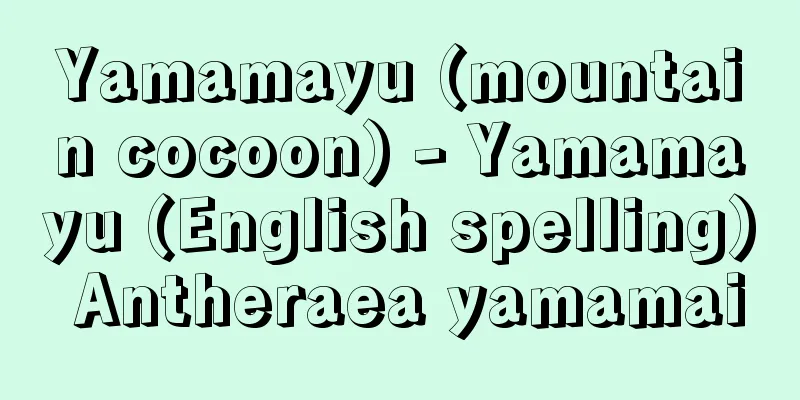Namas

|
… In the Chinese Buddhist scriptures, the Sanskrit word namas is translated as either 'kumyo' or 'namu', and both of these words mean 'to bow one's head and show respect' and 'kie'. Therefore, it includes both the physical action of 'kimyochoyorai' (to place one's forehead on the ground and bow deeply) and 'shishinkimyo' (to devote oneself wholeheartedly in one's heart). … *Some of the terminology that mentions "namas" is listed below. Source | Heibonsha World Encyclopedia 2nd Edition | Information |
|
…サンスクリットのnamasを漢文仏典では帰命とも南無(なむ)とも訳しており,この両語は同じく〈頭を下げ敬意を示すこと〉,帰依(きえ)を意味している。したがって〈帰命頂礼(きみようちようらい)〉(額(ひたい)を地上につけて最敬礼すること)のように身体の動作と,〈至心帰命(ししんきみよう)〉(心中でひたすら帰依すること)の両面をふくんでいる。… ※「namas」について言及している用語解説の一部を掲載しています。 出典|株式会社平凡社世界大百科事典 第2版について | 情報 |
Recommend
Blaxland, G.
...1835) and Adelaide, South Australia (1836). Fl...
Cacique (English spelling)
Originally a word used by the natives of the West ...
Sovereignty debate
There are three sovereignty debates in modern Japa...
Rice harvest break - Inekariyasumi
…[Furushima Toshio] Holidays in early modern rura...
Kyzylkum Desert (English spelling: Kyzylkum Desert)
A desert that straddles Uzbekistan and Kazakhstan...
Ori - Cage
Abbreviation for "Olympics." Ori Para.” ...
Vladimir Evgrafovich Tatlin
Russian painter, sculptor, and set designer. Born...
Theory of the Middle Ages
Kabuki information. Written by Karori Kanshu. Publ...
Anahobe
One of the Nashiro (substitutes) established by th...
Iron juice celebration - Kanetsukeiwai
…However, as the names such as 13th Iron-jang, 17...
Isothiocyanic acid - Isothiocyanate
HN=C=S (59.09). In aqueous solution, it is tautom...
Gesellschaftsroman
…He wrote 18 novels intensively in the last 20 ye...
Emperor Hongwu (Hong-wu-di; Hung-wu-ti)
Born in 1328 in Australia [Died] Hongwu 31 (1398),...
Otto von Guericke (Gericke)
German engineer and physicist. Born in Magdeburg....
God's Mask - Shinmen
Old Noh masks such as Okina masks and various demo...









